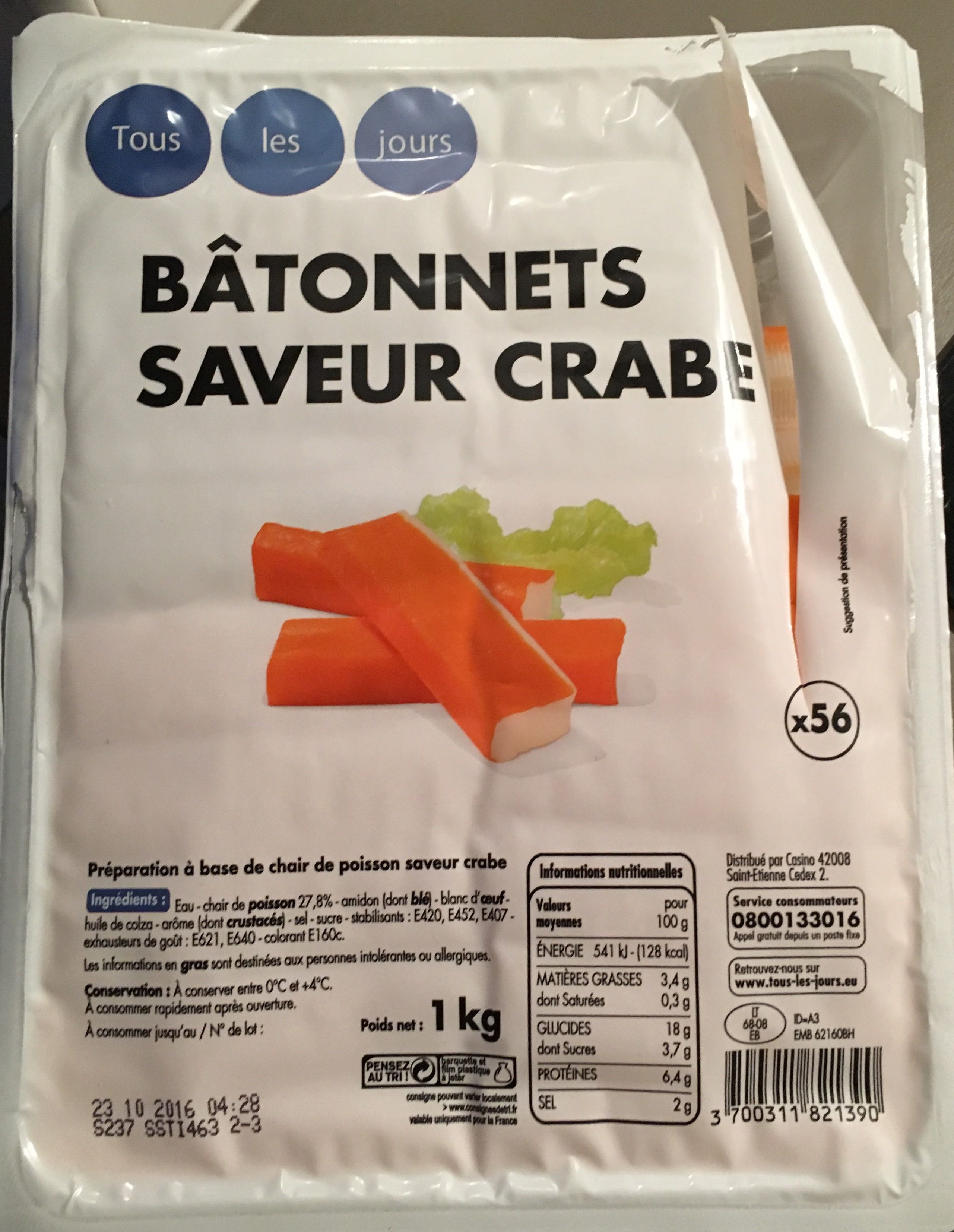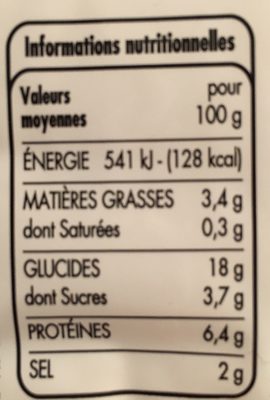Bâtonnets saveur crabe x56 - Tous les jours - 1 kg
This product page is not complete. You can help to complete it by editing it and adding more data from the photos we have, or by taking more photos using the app for Android or iPhone/iPad. Thank you!
×
Some of the data for this product has been provided directly by the manufacturer casino.
Barcode: 3700311821390 (EAN / EAN-13)
Common name: Préparation à base de chair de poisson saveur crabe
Quantity: 1 kg
Brands: Tous les jours, TLJ
Brand owner: Casino
Categories: Seafood, Fishes and their products, Fishes, Fish preparations, Surimi
Traceability code: LT 68-08 EB, EMB 62160BH - Boulogne-sur-Mer (Pas-de-Calais, France)
Countries where sold: France
Matching with your preferences
Environment
Carbon footprint
Packaging
Transportation
Other information
Conservation conditions: Avant ouverture, à conserver entre 0°C et + 4°C. Après ouverture, à conserver au réfrigérateur et à consommer dans les 24 heures
Recycling instructions - To discard: barquette et film plastique
Report a problem
Data sources
Product added on by openfoodfacts-contributors
Last edit of product page on by org-casino.
Product page also edited by casino, casino-off, kiliweb, moon-rabbit, packbot, quechoisir, sebleouf, tacite-mass-editor, yuka.V29ZS0VmUW9uYVpTeHRnRTR6ankwOGhQN0xDa1oyeVZBZlU3SVE9PQ.











